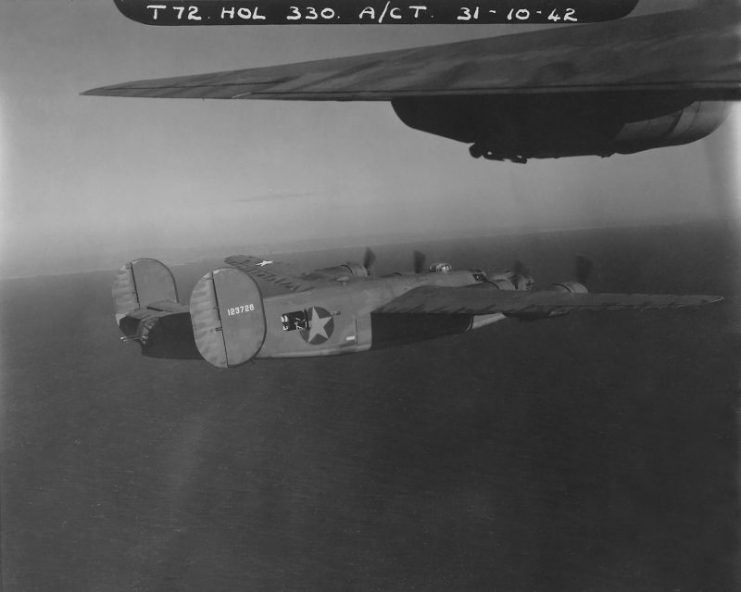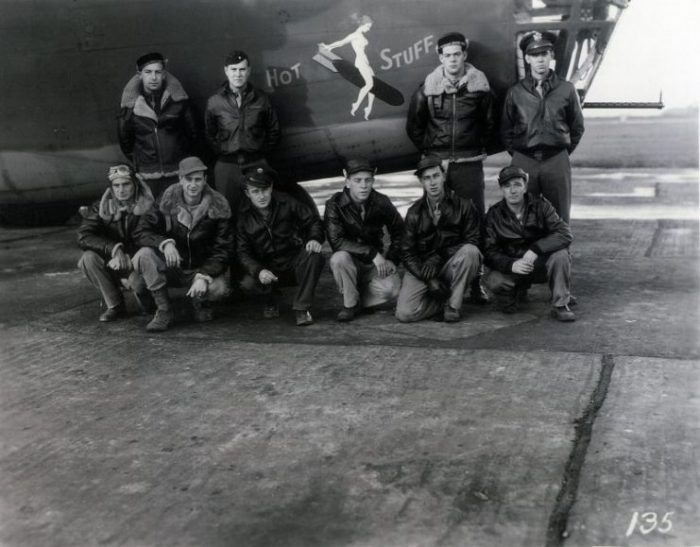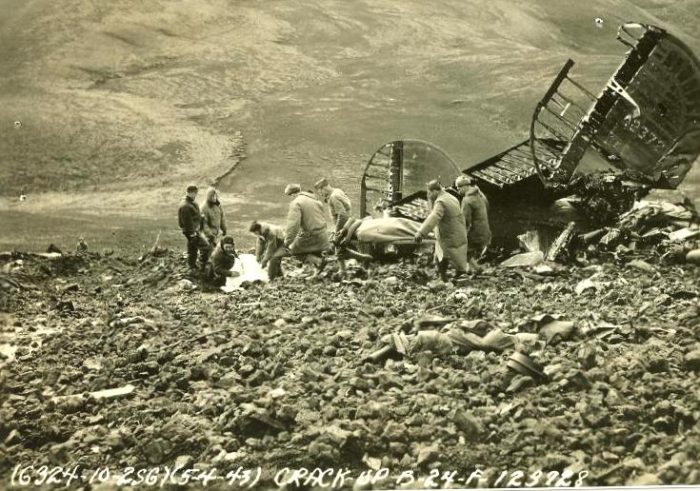The Forgotten B24 that Completed 25 Missions Before the “Memphis Belle”

The “Memphis Belle” has long been recognized as the first US bomber in World War II to complete 25 missions with her crew intact. The B-17 had an almost storybook career.
She served two tours and had zero losses in spite of nearly the entire plane being replaced over time due to damage.
But there is another plane that completed its 25th mission several months prior to the B-17 “Memphis Belle.” Due to the happenstance of history, this plane is nearly forgotten while the “Memphis Belle” is lauded for its accomplishments.
The B-24 Liberator known as “Hot Stuff” was pressed into service rather hastily in November 1942. They were sent to support the operations in North Africa. Having been so rapidly deployed, they served without many of the usual supplies.
Reaching the 25 th mission milestone was important during WWII. Early in the war, there were no long-range escorts providing cover for heavy bombers like the “Hot Stuff.” The lack of pressurized compartments made the long bombing runs uncomfortable and difficult to for the crews to perform their jobs.
A few months into 1942, the casualty rate for bombers was so high, planes were only expected to make 8-12 missions before being shot down. 25 became the official target for completing a tour due to the mental and physical strain a crew went through.
The crew of the “Hot Stuff” completed the important 25 th mission on February 7, 1943, after successfully dropping bombs on Naples, Italy. A month later, after completing their 31 st mission, the crew was sent to England where they received the Distinguished Flying Cross and the Air Medal.

The crew was expected to return home to the US in the spring of 1943 to go on a publicity tour in order to boost morale at home and help with the sale of war bonds.
For the trip home, they would carry an important guest. Lt. Gen. Frank Andrews was returning to the US in order to receive his fourth star. Though he was not made aware, he was also to be installed as the Supreme Allied Commander in Europe. Many members of the “Hot Stuff” crew were bumped from the flight in order to make room for the general’s staff.

But the “Hot Stuff” never made it home. While attempting to refuel in Iceland, the plane crashed, killing all but one of the crew members on the flight.
Ironically, having survived anti-aircraft fire and the harsh conditions in North Africa for 31 missions, “Hot Stuff” crashed in poor weather conditions on its triumphant journey home.

To make matters worse, the “Memphis Belle” did come home safely after its successful career in the war. So it is the “Memphis Belle” that is ingrained in popular culture while the “Hot Stuff” is barely remembered.
Another Article From Us: Got a Spare $12 MILLION – Then This P-82 Twin Mustang is Yours
Major Jake Jacobson was one of the members bumped from that final flight. He has worked to document the accomplishments of the “Hot Stuff” as well as working to have a monument erected in Iceland to commemorate the plane and its crew.
